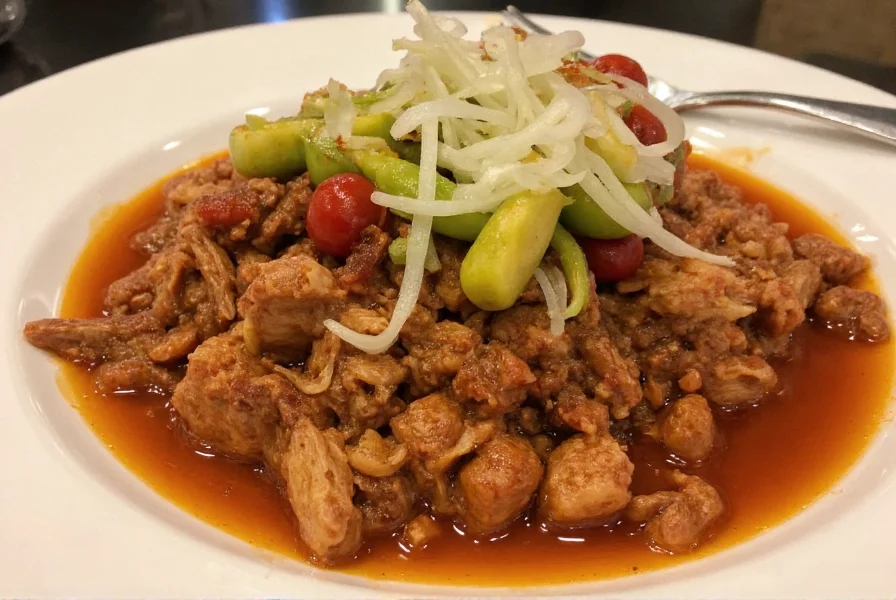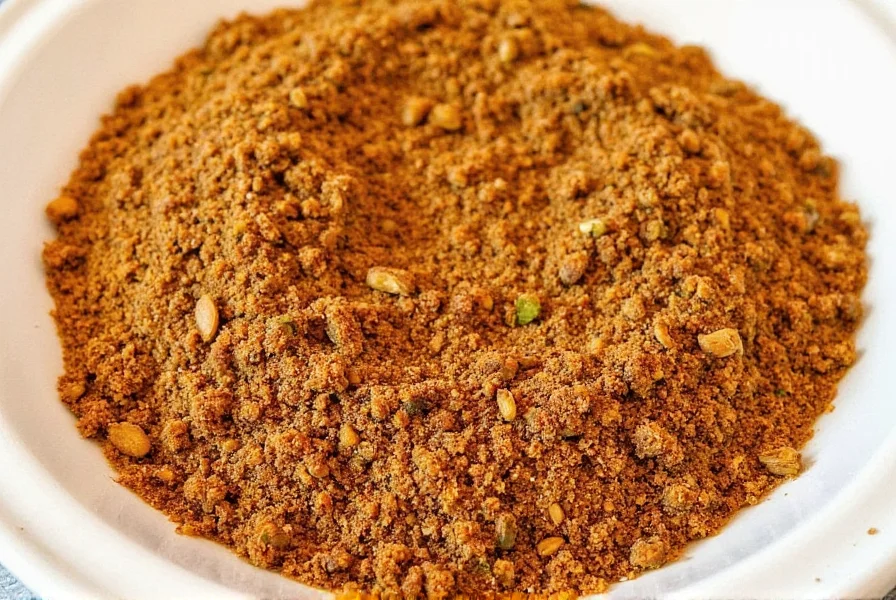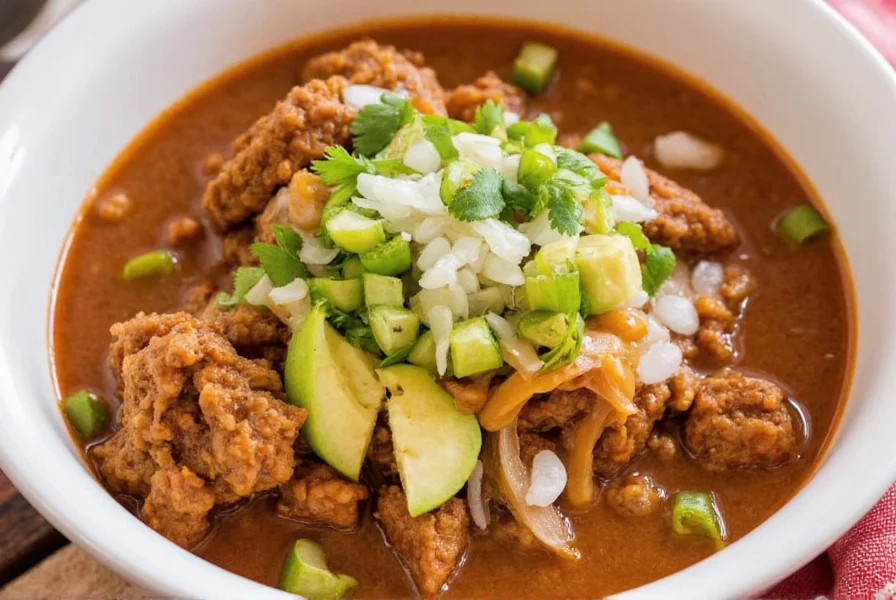The 5 essential spices for authentic posole pork are ancho chili powder, cumin, Mexican oregano, garlic powder, and bay leaf. These spices create the rich, complex flavor that defines this traditional Mexican stew. Below, we break down each spice's role and provide a step-by-step guide for perfect seasoning.
The Essential Spices for Perfect Posole Pork
| Spice | Flavor Profile | Role in Posole | Best Use Case |
|---|---|---|---|
| Ancho Chili Powder | Smoky, sweet, mildly spicy | Adds body and gentle heat | Rubbing onto pork before slow cooking |
| Cumin | Earthy, nutty, warm | Deepens overall flavor | Blending into broth or rubs |
| Mexican Oregano | Bitter, citrusy, floral | Brings aromatic balance | Used early in cooking or added at the end |
| Garlic Powder | Savory, pungent | Enhances umami and richness | Mixing into dry rub or broth base |
| Bay Leaf | Herbal, woodsy | Adds complexity over time | Simmered in broth for slow infusion |
Step-by-Step Guide to Seasoning Your Posole Pork
- Select the right cut: Choose bone-in pork shoulder or butt for best results. Marbling ensures moisture and deep flavor during long cooking.
- Dry rub preparation: Mix equal parts ancho chili powder, cumin, oregano, and garlic powder. Rub generously onto the pork and let sit for at least 30 minutes (or overnight in the fridge).
- Brown the pork: In a heavy pot or Dutch oven, sear the pork on all sides to lock in flavor and build color.
- Add aromatics: Throw in onions, garlic, and bay leaves to deepen the flavor foundation.
- Pour in broth and hominy: Use homemade or high-quality store-bought chicken or pork broth. Add canned or soaked dried hominy.
- Simmer slowly: Cook on low for 3–4 hours until the pork is tender enough to shred easily.
- Adjust seasoning: Taste and add salt, pepper, or a splash of vinegar if needed. Some cooks prefer a dash of lime juice for brightness.

Frequently Asked Questions
What are the 5 essential spices for posole pork?
The five essential spices for authentic posole pork are ancho chili powder (for mild heat and smokiness), cumin (for earthy warmth), Mexican oregano (for floral brightness), garlic powder (for savory depth), and bay leaf (for subtle herbal complexity). These work together to create the distinctive flavor profile that defines great posole.
Can I use chicken instead of pork in posole?
Yes, you can make chicken posole (posole verde when made with green chilies), but traditional red posole (posole rojo) uses pork. Pork shoulder or butt provides the rich, fatty texture that gives posole its characteristic mouthfeel and flavor depth. If substituting chicken, use bone-in thighs for best results and adjust cooking time to 1.5-2 hours since chicken cooks faster than pork.
What cut of pork is best for posole?
Bone-in pork shoulder (also called pork butt or Boston butt) is ideal for posole. This cut has excellent marbling that keeps the meat moist during the long cooking process, and the bones add extra flavor to the broth. Avoid leaner cuts like pork loin, which will become dry and stringy when cooked for extended periods.
Can I use regular oregano instead of Mexican oregano?
You can substitute Mediterranean oregano in a pinch, but Mexican oregano has a distinctly different flavor profile—it's more citrusy, less minty, and has a slightly bitter finish that works better with the rich pork. If substituting, use about half the amount of Mediterranean oregano since it's more potent. For authentic flavor, seek out Mexican oregano specifically.
How long should I simmer posole pork?
For traditional posole, simmer the pork for 3-4 hours on low heat until it's fork-tender and easily shreds. This slow cooking allows the collagen in the pork to break down into gelatin, creating a rich, velvety broth. Rushing the process by cooking at higher temperatures will result in tough meat and a less flavorful broth.
How do I store and reheat leftover posole?
Store cooled posole in an airtight container in the refrigerator for up to 5 days, or freeze for up to 3 months. When reheating, add a splash of broth or water since the hominy will continue to absorb liquid. Posole often tastes even better the next day as the flavors continue to meld. Reheat gently on the stove over medium-low heat—avoid boiling vigorously as this can break down the hominy too much.
Why does my posole lack flavor?
Common reasons include: not properly toasting or blooming spices, using old or stale spices, insufficient seasoning time (spices need time to infuse), or not browning the meat adequately before simmering. Try making a spice paste with a little oil and cooking it for 2-3 minutes before adding liquids, or let your seasoned pork rest overnight before cooking. Remember that posole is meant to have bold, complex flavors—not subtle ones.
Can I make posole pork in a pressure cooker or Instant Pot?
Yes, you can significantly reduce cooking time using a pressure cooker. For pork shoulder, cook on high pressure for 45-60 minutes followed by a natural pressure release. While this method produces tender meat, some traditionalists argue that the slow simmering process develops deeper flavors. If using a pressure cooker, consider searing the meat well first and adding an extra tablespoon of spice blend to compensate for the shortened cooking time.
Conclusion
Mastering posole pork centers on understanding how each spice contributes to the dish's signature flavor. With the right combination and proper technique, your posole will achieve rich, authentic taste that satisfies both traditionalists and new cooks.
Remember: Fresh spices and proper timing are key. Whether you're cooking for family or special occasions, these foundational principles will consistently elevate your posole pork.












 浙公网安备
33010002000092号
浙公网安备
33010002000092号 浙B2-20120091-4
浙B2-20120091-4